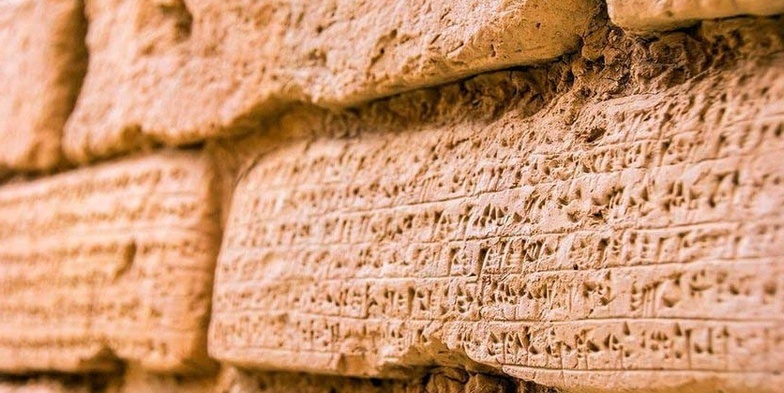SAEDNEWS: Chogha Zanbil, the ancient Elamite ziggurat in southwestern Iran, is a UNESCO World Heritage site shrouded in mystery, where sacred ruins whisper the forgotten power of a lost civilization.
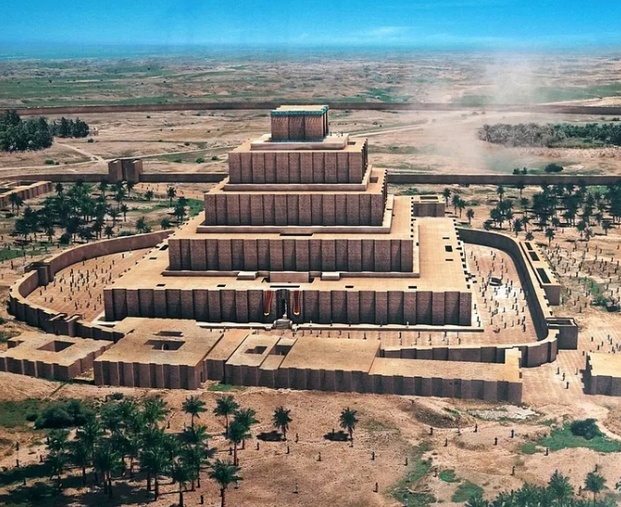
Chogha Zanbil, of which today nothing remains but ruins, was once considered the sacred city of the Elamite Kingdom. Interestingly, archaeologists regard the Chogha Zanbil ziggurat as the first religious structure in Iran.
You may also wonder which civilization Chogha Zanbil belonged to. The ancient temple of Chogha Zanbil in Susa, which in the past the Elamites called the Ziggurat of Dur Untash, was built around 1250 BC. At that time, Untash Gal was the great king of ancient Elam, and his purpose in constructing the Chogha Zanbil temple was to worship the god Inshushinak, the guardian deity of the ancient and important city of Susa. Unfortunately, following the attack of Ashurbanipal’s army, the ziggurat temple of Dur Untash (Chogha Zanbil temple) and its great city of Dur Untash were destroyed along with the Elamite civilization in 645 BC.

This structure is an extraordinary example of ancient human architecture and settlement, reflecting the culture and history of the Elamites, which is why it is considered one of the most important monuments of ancient Iran. In 1979, the Chogha Zanbil ziggurat was registered on the UNESCO World Heritage List as one of Iran’s first outstanding historical sites, along with Naqsh-e Jahan in Isfahan and Persepolis.
This structure is in southwestern Iran, near the ancient city of Susa, in Khuzestan Province. As we all know, Susa is one of the oldest cities in the world. The city of Susa is located 35 kilometers west of the ancient city of Shushtar, 24 kilometers southwest of Dezful, and 115 kilometers northwest of Ahvaz.
In the past, Susa was considered one of the most extensive and beautiful cities in the world and the capital of some of the most powerful empires in history. The ancient structure of Chogha Zanbil in Susa holds many secrets within. The Chogha Zanbil ziggurat, whose Elamite name is the Ziggurat of Dur Untash, was in ancient times part of the city of Dur Untash.
As already mentioned, Chogha Zanbil belongs to which civilization and where it is located. This structure is situated in Khuzestan Province near the ancient city of Susa. There are two routes to reach this area. On the first route, you must travel from Shushtar toward the Karun Agro-Industry complex, which continues to Chogha Zanbil. On the second route, you must take the Ahvaz-Susa road, which branches toward Haft Tappeh. This route leads to Chogha Zanbil after Haft Tappeh.

Haft Tappeh is also one of the archaeological sites of Khuzestan Province, and visiting it is not without merit. This archaeological site consists of several mounds and is located about 10 kilometers southeast of Dezful. According to archaeologists, Haft Tappeh was an important political center in the 15th century BC during the rule of the Elamites and the reign of King Tepti-Ahar. After that, Dezful became the political center of the Elamites. Since Haft Tappeh lies along the way, we recommend visiting this valuable historical site as well.
The famous geologist Jacques de Morgan reported the existence of oil fields in the Chogha Zanbil area in 1890 AD. Fifty years later, when oil engineers were working in Chogha Zanbil, they discovered a brick with inscriptions on it.
They handed the brick over to archaeologists who were conducting research in Susa, which led them to begin excavations in Chogha Zanbil. The result of their research was the discovery of the Chogha Zanbil ziggurat and other important archaeological remains. For decades, this structure had been hidden under the soil in the shape of an inverted basket until it was excavated during the reign of Mohammad Reza Pahlavi by the French archaeologist Roman Ghirshman.
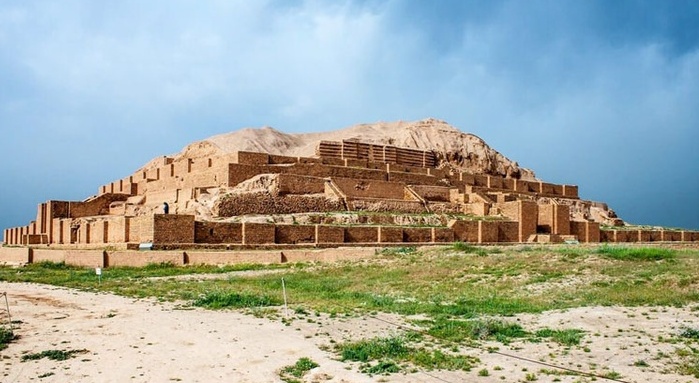
Interestingly, the excavation of this ancient monument, which is located as a symmetrical elevated structure in the heart of a flat plain, completed the world’s knowledge of Iran’s ancient heritage. Unfortunately, after about 50 years, the ziggurat suffered severe erosion and damage due to natural factors such as wind and rain.
The word “ziggurat” is derived from the term zaqura, meaning “mountain peak” or “elevated place,” and similar structures were frequently seen among the temples of the Sumerians of that era. But what does “Chogha Zanbil” mean?
Dur Untash is formed from two Elamite words: Dur, meaning “place” or “settlement,” and Untash, the name of the Elamite king who built the structure. According to archaeologists, Chogha Zanbil is the modern name of Dur Untash and is originally a Luri word.
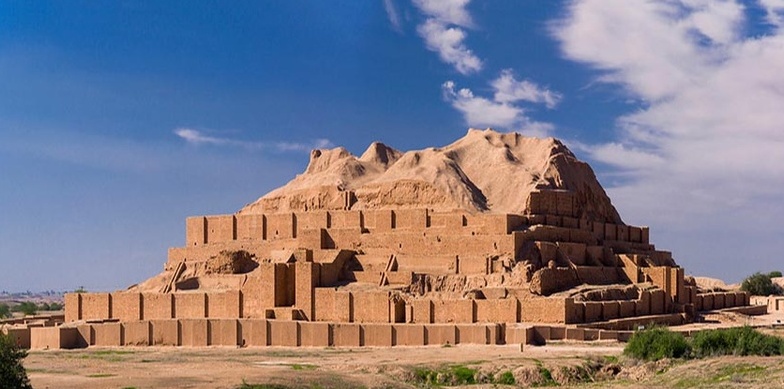
Chogha Zanbil means “basket mound,” composed of the two words Chogha and Zanbil. Chogha in the Luri language means “mound.” Therefore, in answer to the question of what Chogha Zanbil means, we should say that locals called mounds with unnatural shapes “Chogha.” Zanbil means “basket,” and since this structure resembled an upside-down basket before being excavated, the locals gave it the name Chogha Zanbil. Now we know what Chogha Zanbil means and how this name is related to the appearance of this magnificent monument.
The Chogha Zanbil temple in the city of Dur Untash, measuring approximately 1000 meters in length and 1300 meters in width, was composed of three concentric walls made of mudbrick. Inside the first wall stood the main temple, called the ziggurat; inside the second wall were palaces and smaller temples; and inside the third wall were the Chogha Zanbil water purification system, palaces, and underground royal tombs. Considering which historical period Chogha Zanbil belongs to helps us better understand the architecture of this structure.

The main building materials used in the ancient ziggurat of Dur Untash (Chogha Zanbil) were mudbrick and clay. To protect the mudbricks from erosion, a great deal of brick covering was applied. The façade of the ziggurat was decorated with thousands of baked and inscribed bricks. Glazed bricks, bitumen mortar, gypsum plasters, glass ornaments, and clay nails were among the materials used in its construction.
The entrance gates of the Dur Untash (Chogha Zanbil) ziggurat were guarded by statues of bulls made of glazed terracotta. Near the temples of Ishmitik and Rohurater, there was also a kiln used for firing pottery.
The Chogha Zanbil ziggurat complex was originally built in five stories, but today only two stories remain. The ziggurat, with dimensions of 105 × 105 meters and an approximate height of 53 meters above ground level, has only 25 meters remaining today. The construction of its floors was such that all five levels were built parallel to one another, starting from the ground up.
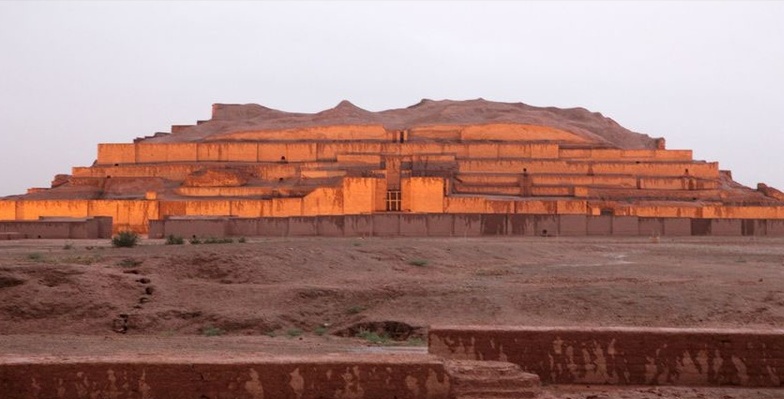
All the ziggurat’s levels were filled with mudbrick, except for the first and fifth levels, which were hollow and contained room-like spaces. The interior structure of the walls was made of mudbrick, while the exterior was built with baked brick. Some of the bricks used in the structure were glazed, while others were decorated with ornaments such as clay nails, which are considered among the oldest tiles in the world. The entire façade of the ziggurat is adorned with bricks inscribed in Elamite cuneiform, recording the name of the builder and the purpose of the construction.
On the northwest and southwest sides of the ziggurat, two circular platforms can be seen. Various theories exist regarding their function; some archaeologists believe these platforms were used at the time for prophecy and astronomy, as sundials, or as altars for sacrifice.
Apart from two unnamed and unidentified temples located near the western and southeastern gates of the second enclosure, the names of the temples of the gods and goddesses of Elam in the Chogha Zanbil Ziggurat are as follows:
Napratep, the goddess of nourishment;
Pinikir, the grandmother of the gods;
Gal, the great god of Elam;
Shimut, the god of Elam;
Manzat, the wife of the Elamite god;
Nusku, the god of fire;
Ada, the god of air;
Nin Ali, the wife of the god of air;
Ruhuratir, the god of Anshan;
Hishmitik, the wife of the god of Anshan;
Ishni Karab, the goddess of oaths.
Having a water treatment system is another unique feature of the historic Chogha Zanbil Ziggurat. This purification system is considered one of the oldest in the world and was unparalleled in its era. Although the Dez River is only 3 kilometers away from the temple, the main source of water for this purification system was the Karkheh River, which was brought to Chogha Zanbil through a 45-kilometer canal. The primary reason for not using the Dez River was the significant difference in elevation between Chogha Zanbil and the river’s surface.
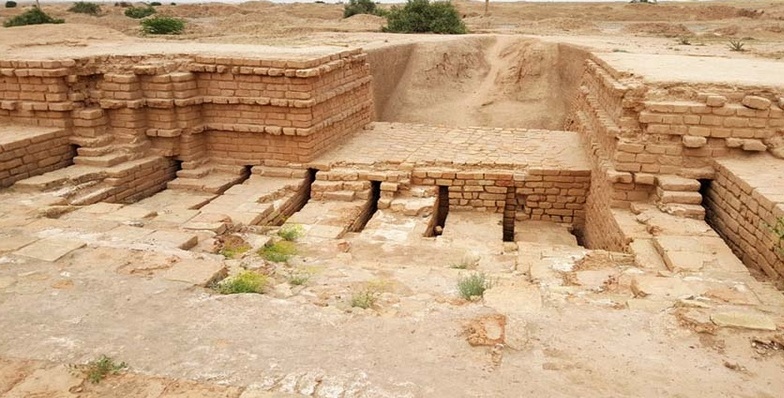
According to archaeologists, the Chogha Zanbil complex, which consists of three structures, included a solar observatory or sun calendar used to calculate the movement of the sun and to mark the yearly cycle. The observatory of the Chogha Zanbil Ziggurat was also used to extract the calendar and to identify the beginning and middle of each season, namely the spring and autumn equinoxes and the summer and winter solstices.

In ancient architecture, the special design of these niches (composed of several consecutive arches that gradually become smaller) held significant importance. This specific design was initially constructed in ancient Iranian architecture for observing the sun; however, over time, it began to be used as decorative elements in the entrance gates of buildings.
The sun-measuring bricks of this structure, built with a special octagonal design, were specifically constructed for solar observation. The inscriptions on these bricks clearly indicate that the circular structure served as an observatory.
The inscriptions on these bricks read:
"I, Untash Gal, son of Humban-numena, king of Anshan and Susa, built a revered structure here: a Siyan Kuk. I achieved this during the many years and countless days of a long reign. I founded a Shunshuairepi for the god Gal and Inshushinak (Siyan Kuk)."
The exact meaning of the two main words, “Siyan Kuk” and “Shunshuairepi,” has not yet been determined. However, according to archaeologists, they most likely convey the concept of an observatory.
As seen in the design of the sun-measuring structures, the changes in angle between the sides of these sun-measuring devices correspond to the changes in the sunrise angle at the beginning of each season. The design of these solar devices made it possible to determine the beginning or middle of each season by observing the shadows cast during sunrise or sunset.
On an inscription found at Chogha Zanbil in Susa, writings engraved by Untash-Gal can be seen. The text engraved on the Chogha Zanbil Ziggurat inscription reads:
"According to Untash-Gal: I engraved the golden bricks and built this sanctuary for the gods Gal and Inshushinak, and dedicated this sacred place, may my works, which are a gift to the gods Gal and Inshushinak, be accepted."
"I broke the Ziggurat of Susa, which was made of bricks glazed with lapis lazuli. I leveled the temples of Elam to the ground and turned Susa into ruins. By my hand, the human voice and cries of joy vanished from there."
